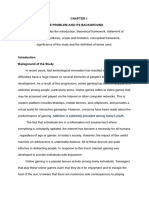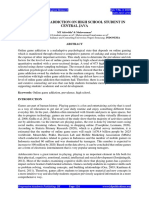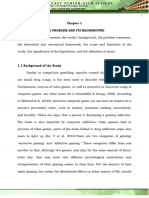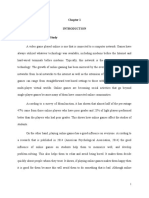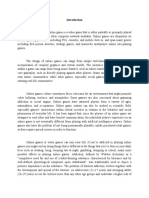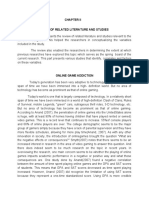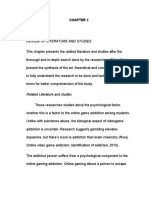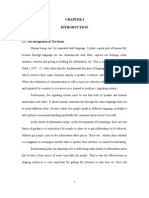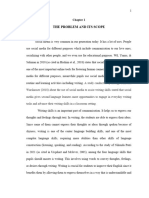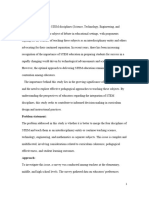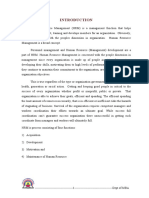0% found this document useful (0 votes)
19 views11 pagesOnline Games
The document explores the impact of online games on the academic performance of students, particularly focusing on the digital addiction levels among high school students at Solana Fresh Water Fishery School. It discusses both the positive effects of gaming, such as improved skills and social connections, and the negative consequences, including addiction and decreased academic achievement. The study aims to assess various factors influencing digital addiction and its correlation with academic performance, while also highlighting the significance of the research for students, parents, and the community.
Uploaded by
marknowellespantoCopyright
© © All Rights Reserved
We take content rights seriously. If you suspect this is your content, claim it here.
Available Formats
Download as DOCX, PDF, TXT or read online on Scribd
0% found this document useful (0 votes)
19 views11 pagesOnline Games
The document explores the impact of online games on the academic performance of students, particularly focusing on the digital addiction levels among high school students at Solana Fresh Water Fishery School. It discusses both the positive effects of gaming, such as improved skills and social connections, and the negative consequences, including addiction and decreased academic achievement. The study aims to assess various factors influencing digital addiction and its correlation with academic performance, while also highlighting the significance of the research for students, parents, and the community.
Uploaded by
marknowellespantoCopyright
© © All Rights Reserved
We take content rights seriously. If you suspect this is your content, claim it here.
Available Formats
Download as DOCX, PDF, TXT or read online on Scribd
/ 11







